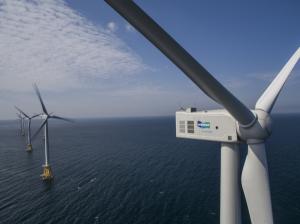
[서울파이낸스 박시형 기자] In 2034, new and renewable energy will become the main energy source with 25.8% of the power generation.
The government held a new and renewable energy policy council on the 29th, and deliberated and confirmed the ‘5th basic plan for the development, use and distribution of new and renewable energy technologies’.
The new and renewable energy basic plan, which is established every 5 years for a period of 10 years or more, contains mid- to long-term goals and implementation plans in the new and renewable energy sector in connection with the’Basic Energy Plan’, the highest plan in the energy sector.
As it is the 5th basic plan for new and renewable energy, the planning period is set between 2020 and 2034, the same as the 9th basic plan for power supply and demand, which was recently confirmed.
The target for the share of new and renewable energy generation in 2034 was set at 25.8% (renewable energy 22.2%, new energy 3.6%) accordingly. As of 2034, the capacity of renewable energy facilities is 82.2GW.
In order to expand the supply of new and renewable energy, the government decided to introduce a wind power license integration organization,’One-Stop Shop,’ and extend the site rental period in line with the increase in the life of the facility. Regulations related to licensing, such as separation distance, will also be improved.
By establishing a regional energy center, establishing and implementing regional energy plans centered on new and renewable energy, strengthening incentives for excellent local governments, and introducing planned locations, the company plans to encourage the spread of new and renewable energy led by the region.
We will build a platform that provides information on idle state-owned lands suitable for new and renewable energy, and provide various financial support using customized loans, green guarantees, and renewable ecosystem funds.
It plans to strengthen safety management by establishing an integrated facility safety management system in connection with the integrated renewable energy licensing system.
The new and renewable energy supply compulsory (RPS) market will be reorganized to focus on long-term competitive bidding contracts to enhance the profitability of business operators, and will consider separating the market by energy source. Based on the introduction of the carbon certification system, the bidding system will be reformed, such as separate bidding for existing and new business operators, and the establishment of new markets for large-scale (more than 20MW).
The mandatory RPS ratio will be increased to 40% by 2034, and the standard for power generation facilities will be lowered from 500MW to 300MW, increasing the number of supply obligations from 23 to 30 companies.
A plan to introduce a new and renewable heat supply system will also be prepared, and a plan to diversify the subject of mandatory renewable fuel mixing (RPS) from bio fuel to renewable energy power and hydrogen will be reviewed and promoted. The biodiesel blending ratio (currently 3%) is gradually increased to around 5% in 2030.
In terms of demand, it was decided to operate various means of implementation to enable companies and public institutions to implement RE100 (a campaign to cover 100% of the power used by renewable energy), and to induce the leading participation of public institutions.
The policy is to strengthen the incentives to participate in RE100, such as accreditation of GHG reduction, green guarantee support, and grant of RE100 labeling, and expand the participants of RE100 to industrial complexes, regions, and citizens.
We will also review ways to provide incentives such as self-consumption type RECs to activate renewable energy for private use.
Renewable energy that exceeds the demand for each time period is planned to be used at a discounted weekly rate or stored at another time period.
The government has decided to foster 1,000 hydrogen specialized companies and 100 energy innovative companies with sales of 100 billion won or more through research and development (R&D), innovation procurement, and investment expansion. The scale of R&D support for the hydrogen subsidiary will increase significantly from 20 billion won in 2022 to 200 billion won in 2030.
It will focus on localizing core technologies such as high-efficiency solar cells, ultra-large wind turbines, mass production of green hydrogen, and water heat, while improving connection methods and infrastructure to mitigate system congestion and respond to fluctuations in renewable energy.
Copyright © Seoul Finance Unauthorized reproduction and redistribution prohibited
